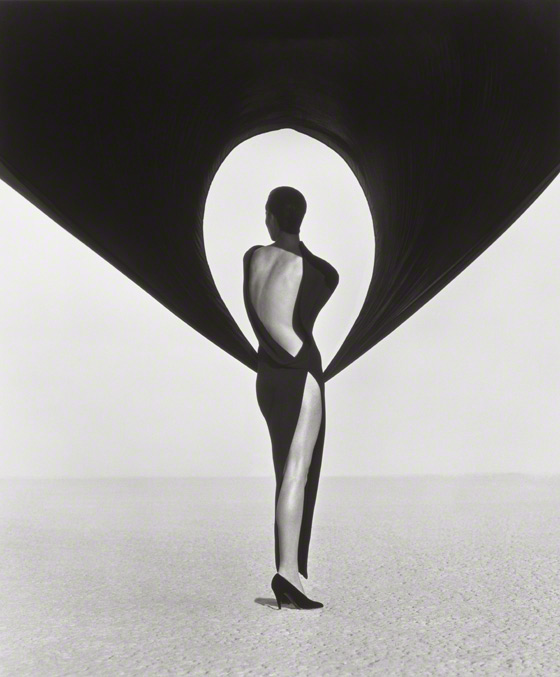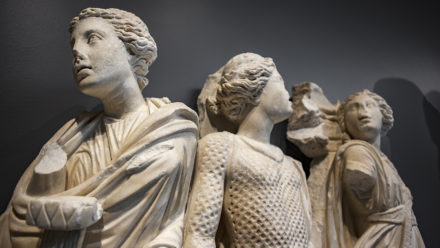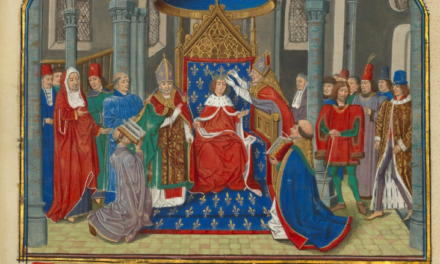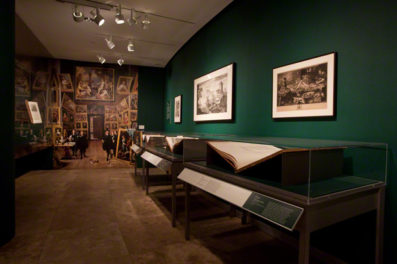When Herb Ritts created this image, it was touch-and-go whether he would get his crew and model off the El Mirage lake bed before a storm swept through.

Versace Dress, Back View, El Mirage, Herb Ritts, 1990. Gelatin silver print, 24 x 20 in. The J. Paul Getty Museum, 2012.23.22. Gift of the Herb Ritts Foundation. © Herb Ritts Foundation
Mark McKenna, now executive director of the Herb Ritts Foundation, was Ritts’s camera assistant and told me about the “swing shot,” or what was off-camera that day, in his interview for the audio guide that accompanies the exhibition Herb Ritts: L.A. Style, opening tomorrow.
Ritts was not an early bird (is anyone?). McKenna chuckled, “If you’re going to start hair and makeup at six o’clock in the morning, right off the bat you’re just setting up a brutal day for everybody.” Instead they began in the afternoon, with a chef grilling chicken and music in the background. He recalls the sense of “play” in the air, despite the prominent client, Versace.
Colleagues often describe Ritts as a perfectionist, but one who was still committed to keeping his crew happy, respected, and well-fed. He believed the more play involved, the better the photographs. McKenna recalls him as “an incredible director of people…not just telling them what to do, but getting them to step in and be a part of the process.” This stood in stark contrast to other photographers with whom he’d worked, who often created a tense environment that drained the fun from the set—and the pictures.
On this day, Ritts was in his element. Out in nature, full sun, with a minimal but talented team and a gorgeous supermodel at his disposal, Ritts could have created an interesting photograph just by posing Christy Turlington on the parched ground in her Versace gown. Instead, Ritts was always after something with more visual “pop,” as he called it, so he and the prop stylist continued to experiment.
As Turlington hid fistfuls of fabric in front of her, off-camera the crew tied the outer corners to light stands on either side. They weighted the stands down with sandbags until—suddenly—the desert wind churned past and blew up the cone of fabric like an inside-out balloon. Ritts seized the moment and captured startling image you see above. Turlington appears as a kind of goddess; encircled by a graphic halo, in a space of pure timelessness.
Ritts knew right away that this shot was it: eye-catching and balanced, projecting strength and sophistication. It features hallmark elements of his work: a simple background and high contrast between light and dark. Even the shadows have an elegant drape over her body. (“It’s not where you place the light, it’s where you place the shadows,” in the words of fellow photographer and director Matthew Rolston, who also discusses this image in the audio guide.)
Minutes after this picture was taken, dark clouds rolled in. The team scrambled to pack up before the dry lake bed became, well, a lake. In my interviews with Ritts’s friends and colleagues, including models Cindy Crawford and Tony Ward, and actor Richard Gere, some of my favorite parts were these behind-the-scenes stories. Listen for yourself on the audio guide accompanying the exhibition and on the exhibition website and tell us what takes you by surprise.




Comments on this post are now closed.
Trackbacks/Pingbacks